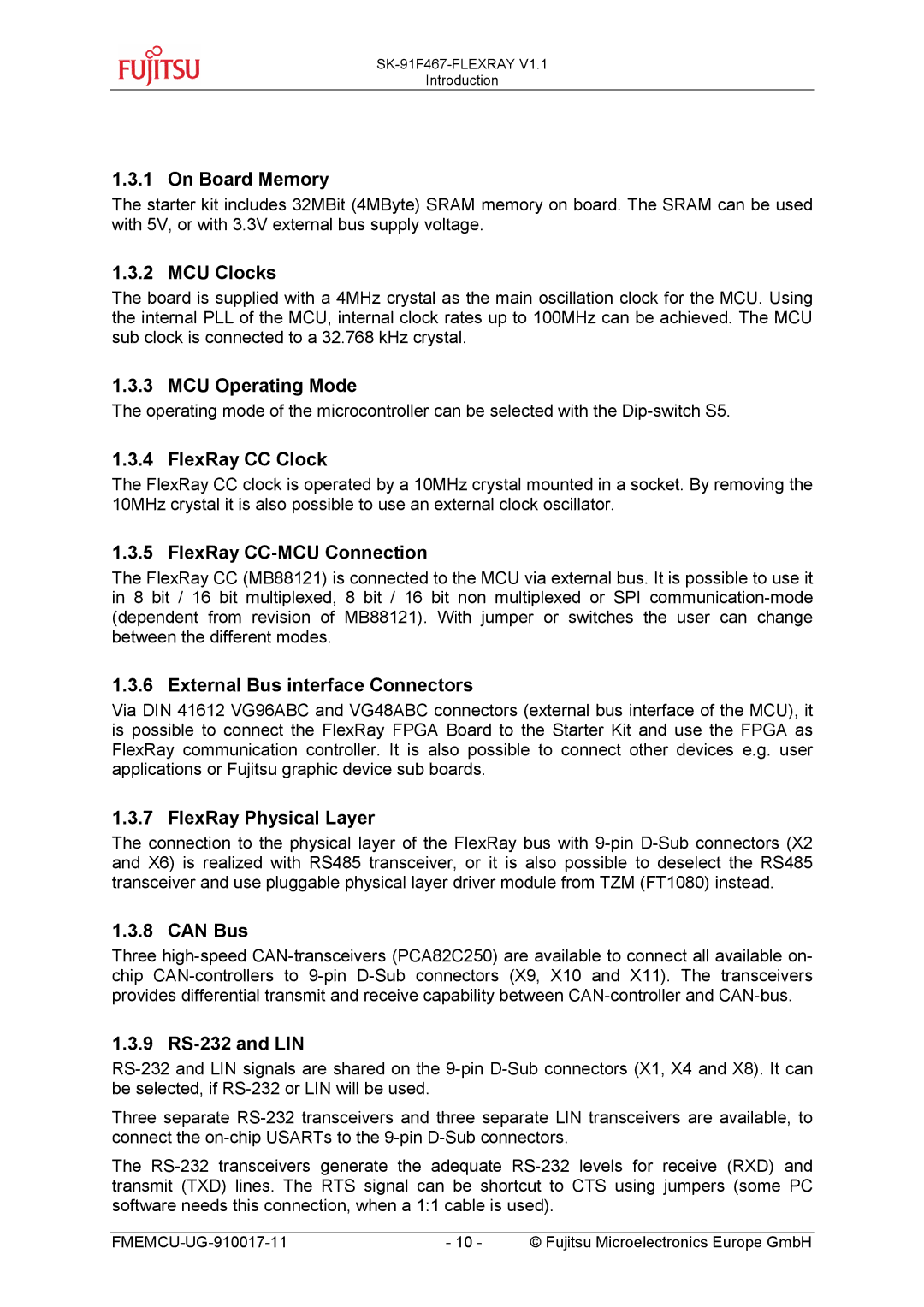Introduction
1.3.1 On Board Memory
The starter kit includes 32MBit (4MByte) SRAM memory on board. The SRAM can be used with 5V, or with 3.3V external bus supply voltage.
1.3.2 MCU Clocks
The board is supplied with a 4MHz crystal as the main oscillation clock for the MCU. Using the internal PLL of the MCU, internal clock rates up to 100MHz can be achieved. The MCU sub clock is connected to a 32.768 kHz crystal.
1.3.3 MCU Operating Mode
The operating mode of the microcontroller can be selected with the
1.3.4 FlexRay CC Clock
The FlexRay CC clock is operated by a 10MHz crystal mounted in a socket. By removing the 10MHz crystal it is also possible to use an external clock oscillator.
1.3.5 FlexRay CC-MCU Connection
The FlexRay CC (MB88121) is connected to the MCU via external bus. It is possible to use it in 8 bit / 16 bit multiplexed, 8 bit / 16 bit non multiplexed or SPI
1.3.6 External Bus interface Connectors
Via DIN 41612 VG96ABC and VG48ABC connectors (external bus interface of the MCU), it is possible to connect the FlexRay FPGA Board to the Starter Kit and use the FPGA as FlexRay communication controller. It is also possible to connect other devices e.g. user applications or Fujitsu graphic device sub boards.
1.3.7 FlexRay Physical Layer
The connection to the physical layer of the FlexRay bus with
1.3.8 CAN Bus
Three
1.3.9 RS-232 and LIN
Three separate
The
- 10 - | © Fujitsu Microelectronics Europe GmbH |
